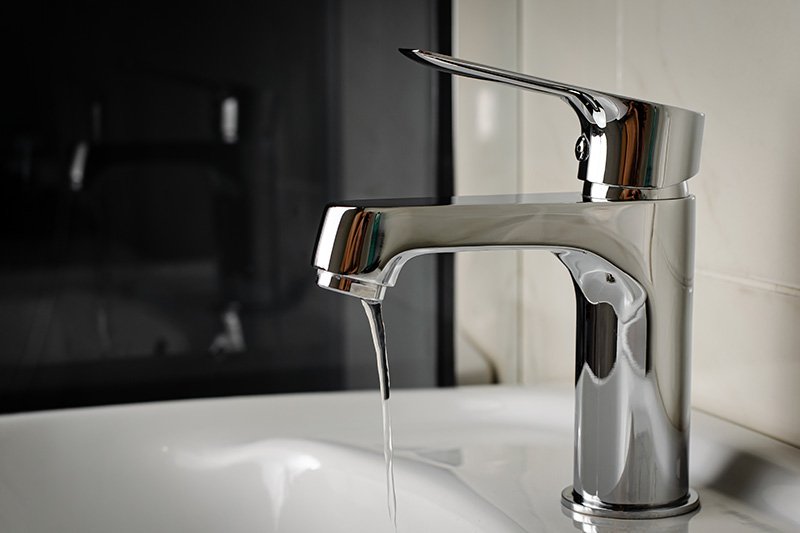Water is an indispensable part of our daily lives, serving various purposes from quenching our thirst to facilitating household chores. However, encountering issues with tap water is not uncommon. This comprehensive guide aims to delve deeper into troubleshooting common tap water problems, offering detailed solutions to ensure that you not only have access to water but that it’s clean, safe, and reliable.
Low Water Pressure:
Low water pressure can be a vexing issue, affecting activities like showering or washing dishes. Causes may range from clogged pipes to a malfunctioning pressure regulator or problems in the municipal water supply.
It’s advisable to check for local water supply disruptions and inspect your plumbing for any blockages. Professional help may be required to rectify issues with pressure regulators or the municipal water system.
Discolored Water:
The sight of discolored water flowing from your tap can be alarming. Rust, sediment, or corroded pipes may be the culprits. To address this, run the tap for several minutes to flush out any debris.
If the problem persists, contacting your water provider is crucial to inquire about potential distribution system issues.
Foul Odor or Taste:
An unpleasant taste or odor in tap water can be caused by bacteria, algae, or chemicals. Installing a water filter is a simple yet effective solution to enhance taste and remove odors.
However, if problems persist, consider having your water professionally tested to identify specific contaminants and implement targeted solutions.
Leaks and Drips:
Leaking taps are not only wasteful but also indicative of underlying plumbing issues. Start by checking for visible leaks and tightening connections.
If the problem persists, professional plumbing assistance may be necessary to identify and repair the source of the leak, preventing potential water damage to your property.
Cloudy Water:
Cloudy water may be due to tiny air bubbles, minerals, or sediments. Letting the water sit for a few minutes can often resolve the issue, allowing bubbles to rise. Alternatively, using a water filter can help remove impurities.
If cloudiness persists, contact your water provider for further investigation into the cause.
Water Temperature Fluctuations:
Inconsistent water temperature can disrupt your daily routines. Start by checking your water heater settings and inspecting the thermostat for issues.
Sediment buildup in the tank may also be a culprit, requiring periodic flushing to maintain optimal performance and reliable water temperature.
Sudden Increase in Water Bills:
A sudden spike in water bills could be an indication of a hidden leak. Regularly inspect your property for visible leaks and monitor your water usage.
If the cause remains elusive, consulting a plumber for a thorough inspection can identify and address leaks promptly, preventing further financial and environmental impact.
Water Hardness:
Hard water, characterized by high mineral content, can lead to limescale buildup in pipes and appliances.
Installing a water softener is a proactive solution to reduce water hardness, prolonging the lifespan of plumbing fixtures and appliances and ensuring consistent water flow.
Unusual Sounds:
Banging, whistling, or gurgling sounds from your plumbing can indicate air in the pipes, water hammer, or other issues.
Bleeding air from the pipes, securing loose pipes, and installing water hammer arrestors, if necessary, can help resolve these disturbances and maintain a quiet and efficient plumbing system.
FAQs:
Q1: How can I test the quality of my tap water?
A1: You can use water testing kits or contact your local water authority for professional testing services to identify any potential contaminants.
Q2: Is it safe to drink tap water if it has an unusual taste or odor?
A2: While some minor taste and odor issues can be resolved with a water filter, it’s advisable to have your water professionally tested to ensure safety.
Q3: Why is my water heater not producing hot water consistently?
A3: Check the thermostat settings, inspect for sediment buildup, and ensure the heating element is functioning correctly to maintain consistent hot water.
Q4: What should I do if I notice a sudden drop in water pressure?
A4: Investigate local water supply issues, inspect for visible leaks, and ensure there are no obstructions in your plumbing that may be causing the pressure drop.
Q5: How often should I flush my water heater?
A5: Flushing your water heater annually helps remove sediment buildup, ensuring optimal performance and extending the lifespan of the appliance.
Q6: Can I fix a leaking tap myself?
A6: Minor leaks can often be fixed by tightening connections, but for persistent issues, it’s recommended to seek professional plumbing assistance to prevent further damage.
Q7: How do I address limescale buildup in my appliances?
A7: Installing a water softener is an effective solution to reduce water hardness, minimizing limescale accumulation and extending the life of your appliances.
Q8: Should I be concerned about cloudy water?
A8: Letting cloudy water sit for a few minutes can often resolve the issue, but if the cloudiness persists, it’s advisable to contact your water provider for further investigation.
Conclusion:
Effectively troubleshooting tap water issues is crucial for maintaining a consistent, safe, and reliable water supply in your home. By identifying and addressing common problems promptly, you can ensure the quality and functionality of your tap water, promoting a healthy and efficient living environment. If in doubt or if issues persist, always consult with professionals to address more complex plumbing issues, safeguarding the well-being of your household and the longevity of your plumbing system.

A group of home improvement enthusiasts and bathroom design experts, combines in-depth knowledge and a shared passion to deliver engaging, informative content that guides readers through the world of bathroom innovation and style.

Leave a Reply